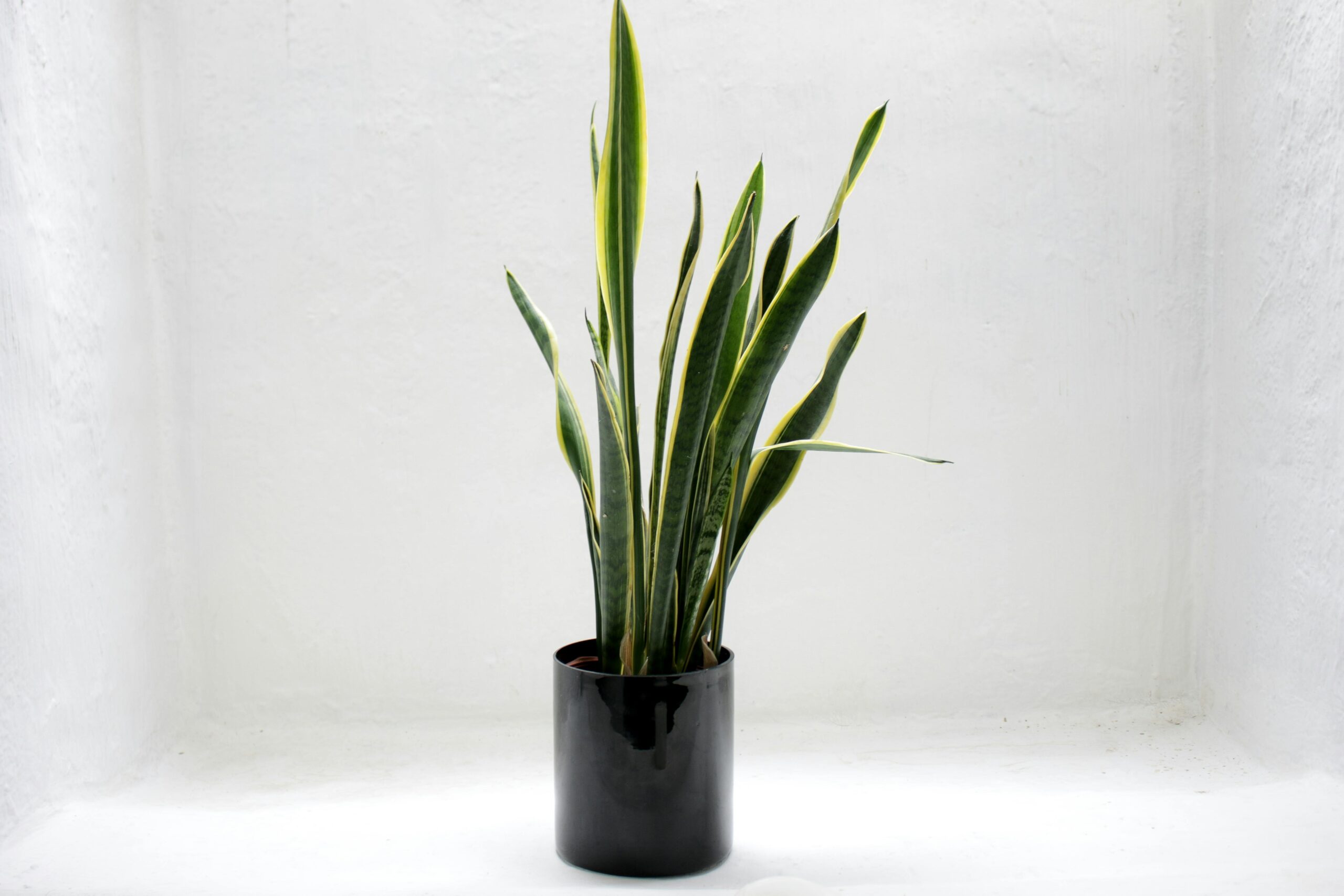Growing a snake plant (Sansevieria) is an excellent choice for both novice and experienced indoor gardeners. Known for its striking appearance and air-purifying qualities, this hardy plant requires minimal care and thrives in various conditions. With the right knowledge and techniques, you can cultivate a healthy snake plant that enhances your living space.
#1 Choosing the Right Snake Plant Variety
When selecting a snake plant, consider the various types available. Each variety has unique characteristics that can fit different aesthetic preferences and care requirements.
Popular Snake Plant Varieties
- Sansevieria trifasciata: Commonly known as the mother-in-law’s tongue, this variety features tall, upright leaves with striking green and yellow stripes.
- Sansevieria cylindrica: Known as the cylindrical snake plant, it has round, tubular leaves that grow vertically, providing a unique look.
- Sansevieria laurentii: This variety showcases a beautiful contrast of dark green and yellow edges, making it a popular choice for decorative pots.
#2 Ideal Growing Conditions for Snake Plants
To ensure your snake plant thrives, provide it with the right growing conditions. Here’s a checklist of what you need:
Soil Requirements
- Well-draining potting mix, ideally formulated for succulents.
- A mixture of potting soil, sand, and perlite can enhance drainage.
Pot Selection
- Choose a pot with drainage holes to prevent water accumulation.
- Terracotta pots are a great option as they absorb excess moisture.
Temperature and Humidity
- Ideal temperature range: 60°F to 80°F (15°C to 27°C).
- Humidity levels: Snake plants are tolerant of low humidity but prefer moderate levels.
#3 How to Plant or Repot a Snake Plant
Planting or repotting your snake plant is straightforward. Follow these steps for successful planting:
- Choose a pot that is 1-2 inches wider than the current pot.
- Prepare the soil by mixing potting soil with sand and perlite.
- Gently remove the plant from its current pot, taking care not to damage the roots.
- Place the plant in the new pot and fill in with soil, ensuring the roots are covered but the leaves remain above the soil line.
- Water lightly to settle the soil, then allow it to dry out before the next watering.
#4 Watering and Feeding Your Snake Plant
Watering is crucial for snake plant health. Here’s how to do it effectively:
Watering Frequency
- Water every 2-6 weeks, depending on the season and humidity levels.
- Always check the top 1-2 inches of soil; if dry, it’s time to water.
Fertilization Recommendations
- Use a balanced, water-soluble fertilizer during the growing season (spring and summer).
- Fertilize once a month; avoid fertilizing in fall and winter when growth slows.
#5 Lighting Requirements and Placement Tips
Snake plants are adaptable and can thrive in various lighting conditions. However, optimal placement can enhance their growth:
Do’s and Don’ts of Lighting
- Do: Place your snake plant in bright indirect light for optimal growth.
- Do: Allow it to tolerate low light conditions; they can survive in shaded areas.
- Don’t: Expose the plant to direct sunlight for extended periods, as this can scorch the leaves.
Placement Examples
- Near a window with filtered light is ideal.
- A spot away from direct sunlight, such as a living room corner, works well.
#6 Common Problems and How to Fix Them
Even with proper care, snake plants can encounter issues. Here are some common problems and their solutions:
Root Rot
- Symptoms: Yellowing leaves and mushy roots.
- Solution: Remove the plant from the pot, trim away affected roots, and repot in fresh, dry soil.
Pests
- Symptoms: Visible insects, sticky residue, or webbing on leaves.
- Solution: Use insecticidal soap or neem oil to treat infestations.
Leaf Yellowing
- Symptoms: Leaves turning yellow and soft.
- Solution: Check for overwatering and adjust your watering schedule accordingly.
#7 How to Propagate Snake Plants (Step-by-Step)
Propagating snake plants is a rewarding process. Here are two methods to propagate:
Leaf Cuttings in Soil
- Select a healthy leaf and cut it into sections, each about 4-6 inches long.
- Allow the cuttings to dry for a day to form a callus.
- Plant the cuttings upright in well-draining soil.
- Water lightly and place in indirect light.
- Roots should develop in a few weeks.
Leaf Cuttings in Water
- Cut a healthy leaf into sections as described above.
- Place the cuttings in a glass of water, ensuring only the bottom is submerged.
- Change the water weekly to keep it fresh.
- Once roots develop, transfer to soil.
#8 Key Takeaways for Healthy Snake Plants
Growing a snake plant can be a fulfilling endeavor, providing both beauty and air purification to your home. Remember these key points for successful growth:
- Select the right variety for your space.
- Provide well-draining soil and proper potting conditions.
- Water sparingly and feed during the growing season.
- Ensure appropriate lighting and monitor for common problems.
- Don’t hesitate to propagate your plant for even more greenery.
With these guidelines in mind, you are well-equipped to grow a thriving snake plant that will flourish in your indoor garden.

